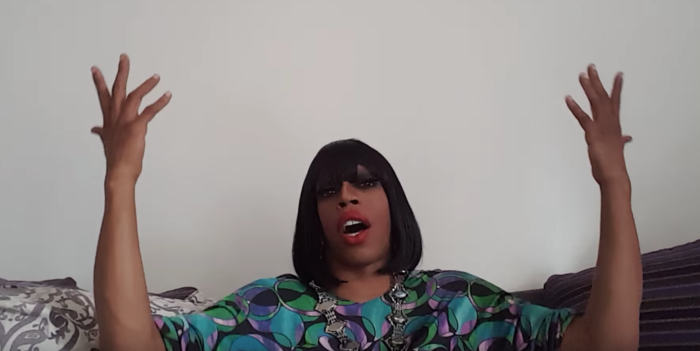Emi Grate, a Brooklyn drag queen, recently summed up perhaps the biggest critique that drag performers have about RuPaul’s Drag Race: “There’s more to drag than TV-ready makeup, finger wave wigs, and supermodel poses.”
While the show has existed for nine years and has become the primary example of drag culture for the mainstream, it’s not perfect — and many queens who are performing in a post-Drag Race industry have a few issues with the biggest being that the show only shows a few different types of drag.
I recently had a conversation with Emi Grate about this to learn more about how the show has shaped how younger queens learn about the practice of drag. As Emi puts it, there is also one massive difference between local drag performances and the show.
“Here in the drag scene, most of the storytelling happens on stage and the challenges happen backstage,” the performer told INTO. “The stories may be personal, they may have to do with the current state of the world or queer history, or they may be about pop culture or underground cultures.”
Subscribe to get a twice-weekly dose of queer news, updates, and insights from the INTO team.
in Your Inbox
The challenges that Emi describes have much more to do with the logistics of having a drag career, something you never see discussed on the show. How do you balance your day job and nightlife gigs? How do you produce enough variety of looks and acts in order to maintain an audience while still being on a limited budget?
On the show, you get the reversal. The storytelling happens in the workroom and talking heads, while the challenges (for the most part) aren’t personal to the queens. But in some ways, Emi said, the show is representative of what a successful and well-rounded drag career looks like.
“If you stay in the business, if you are to succeed without Drag Race, you are going to face those challenges sooner or later. You may write, record, and film music one year. You may be in a play or musical one year. You may do a comedy roast one year. You may represent a clothing or makeup brand one year.”
Consequently, this illustration of drag has given some young performers the pressure to have skills in all areas that are explored in the challenges. Emi, for example, said she has to remind herself that Drag Race isn’t the end-all, be-all of drag. Some performers have made it without the Drag Race platform and “some drag [performers] may not be palatable for a wider audience and they exist for a handful of faithful followers as subcultures within a subculture.”
Tyga Tonic, another Brooklyn queen, expressed a similar sentiment when I asked her about it. She said she felt a similar pressure to be “amazingly well rounded” but after some time, it started to get to her.
“It really started to bother me that the main comments I got were comparing me to Drag Race girls and it put a fire under my ass to develop as my own and to work to create content that no other queen is creating.”
Critiques of the show from queens, like the famous video from Jasmine Masters, often include a comment about how the girls all end up looking the same. They all come with Raven’s makeup or split bottom lashes like Naomi Smalls.
Part of this seems like it’s incorporated into the premise of the show. As Emi Grate explained to me, the show really does put a lot of emphasis on “the future of drag,” so the fact that queens on the show would be responsible for spreading their style of drag is part of that. “In that way, I feel like older/more traditional drag gets devalued sometimes on the show and in the minds of the new drag audience.”
This focus on the future of drag is arguably not all bad. “How people see drag is very strongly linked to [an individual’s] LGBT activism in my opinion.” Emi told me, “Previous generations were more concerned with passing in cishet society, and a new generation wants to stand out and claim themselves.” So, whereas older drag focuses on “realness,” new drag performers might be more invested in what Emi called a “gender renaissance.” Queens like Sasha Velour, Milk, and Sharon Needles.
However, the problem starts when these newer Drag Race girls can make it more difficult for other queens in the industry. Because, as Tyga explained to me, the show has changed the way our culture views drag. Performers are losing audiences if their events don’t include someone from the show, “or if they are booked with Drag Race girls, they end up making far less in tips because fans are more inclined to tip the Drag Race girl than the lesser known local queen.”
I told Emi Grate that, as an outsider, Drag Race seemed like the drag Olympics. If I were a queen, I feel like I’d spend my entire career just waiting for a chance at being on the show. Then when I was there, I’d try to make a brand for myself or try to become a meme. I asked Emi how my perceptions matched hers, or what fans misunderstood about Drag Race.
“Well, I wouldn’t say it’s the drag Olympics.” Emi said, “The Olympics is drag itself.”
As Drag Race continues to grow in popularity and influence more young queens, the show will have to deal with its impact on neighborhood drag in general. The evolution of drag, and queer culture in general, is dependant on the work of these small drag communities. Every queen on the show got her grounding in a specific drag scene, so remember: It’s never too late to support your local drag queen.















